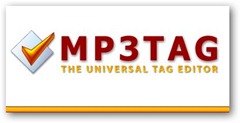A confused deputy is a computer program that is innocently fooled by some other party into misusing its authority. It is a specific type of privilege escalation. In information security, the confused deputy problem is often cited as an example of why capability-based security is important, as capability systems protect against this whereas ACL-based systems do not.
Confidence trick based scams are based on gaining the trust of a victim in order for an attacker to use them as a confused deputy. For example in Salting, an attacker presents a victim with what appears to be a mineral-rich mine. In this case an attacker is using a victim’s greed to persuade them to perform an action that the victim would not normally do.
When checking out at a grocery store, the cashier will scan the barcode of each item to determine the total cost. A thief could replace barcodes on his items with those of cheaper items. In this attack the cashier is a confused deputy that is using seemingly valid barcodes to determine the total cost.
A cross-site request forgery (CSRF) is an example of a confused deputy attack that uses the web browser to perform sensitive actions against a web application. A common form of this attack occurs when a web application uses a cookie to authenticate all requests transmitted by a browser. Using JavaScript an attacker can force a browser into transmitting authenticated HTTP requests.
The Samy computer worm used Cross-Site Scripting (XSS) to turn the browser’s authenticated MySpace session into a confused deputy. Using XSS the worm forced the browser into posting an executable copy of the worm as a MySpace message which was then viewed and executed by friends of the infected user.
Clickjacking is an attack where the user acts as the confused deputy. In this attack a user thinks they are harmlessly browsing a website (an attacker-controlled website) but they are in fact tricked into performing sensitive actions on another website.[3]
An FTP bounce attack can allow an attacker to indirectly connect to TCP ports that the attacker’s machine has no access to, using a remote FTP server as the confused deputy.
Another example relates to personal firewall software. It can restrict internet access for specific applications. Some applications circumvent this by starting a browser with a specific URL. The browser has authority to open a network connection, even though the application does not. Firewall software can attempt to address this by prompting the user in cases where one program starts another which then accesses the network. However, the user frequently does not have sufficient information to determine whether such an access is legitimate—false positives are common, and there is a substantial risk that even sophisticated users will become habituated to clicking ‘OK’ to these prompts.[4]
Not every program that misuses authority is a confused deputy. Sometimes misuse of authority is simply a result of a program error. The confused deputy problem occurs when the designation of an object is passed from one program to another, and the associated permission changes unintentionally, without any explicit action by either party. It is insidious because neither party did anything explicit to change the authority.
 Once your audio has been recorded and edited (preferably in WAV format) you will need to convert it into a suitable podcast format. The universally accepted audio file format for podcasts is MP3. WinLAME is an excellent piece of free podcasting software designed to convert WAV files into the podcast friendly MP3 format.
Once your audio has been recorded and edited (preferably in WAV format) you will need to convert it into a suitable podcast format. The universally accepted audio file format for podcasts is MP3. WinLAME is an excellent piece of free podcasting software designed to convert WAV files into the podcast friendly MP3 format. Now that you have your podcast MP3 audio file and some suitable artwork for its cover, you will need to embed the artwork into the MP3 file and add some additional tags that can be displayed by the listener’s playback device.
Now that you have your podcast MP3 audio file and some suitable artwork for its cover, you will need to embed the artwork into the MP3 file and add some additional tags that can be displayed by the listener’s playback device.